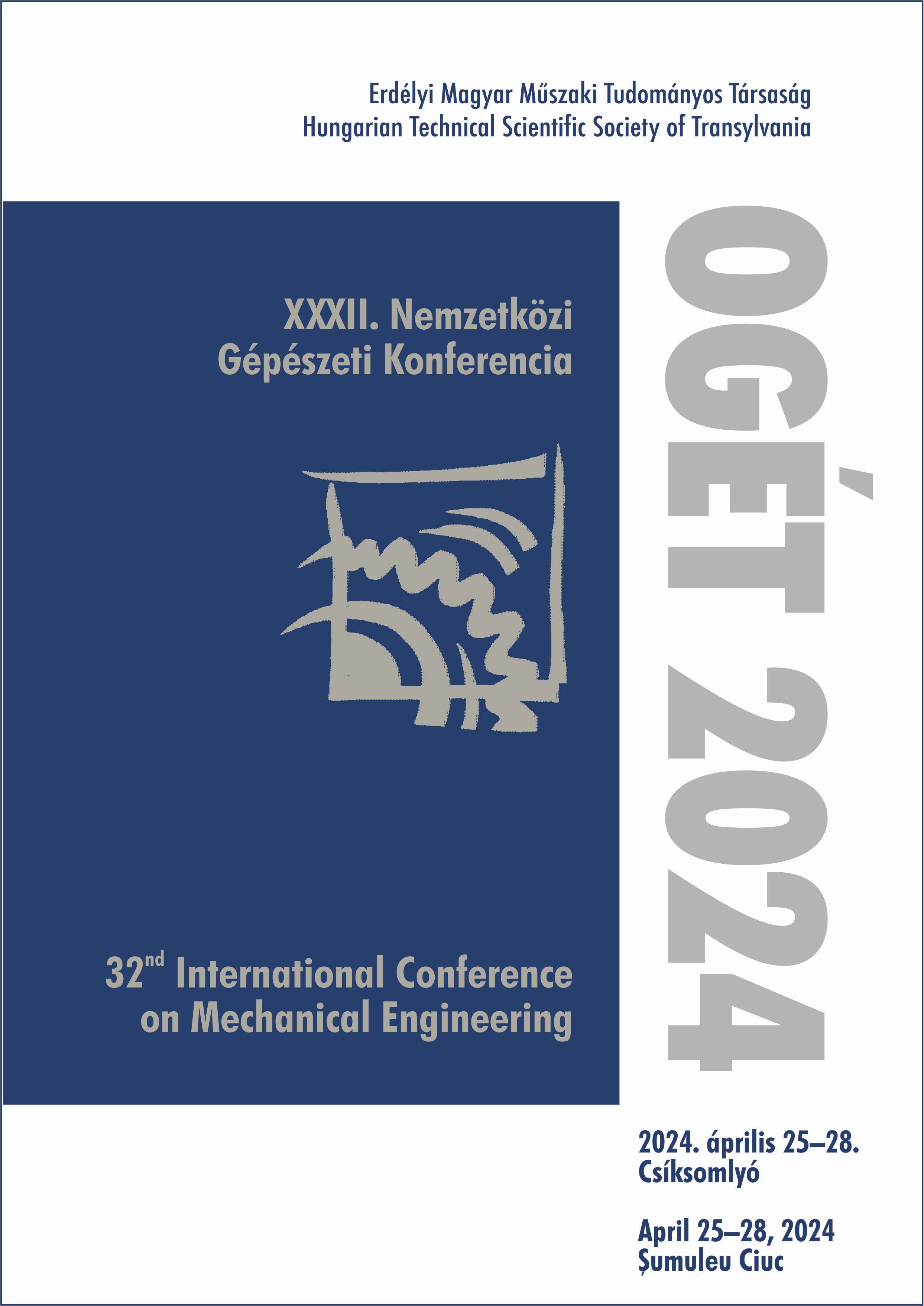Kompozit anyagok modellezési lehetőségei
Modeling Opportunities for Composite Materials
Keywords:
composite material, composite modeling, sfrp material, finite element analysis, /, kompozit, kompozit modellezése, rövid szálerősítésű kompozit anyag, végeselem szimulációAbstract
Composite materials is crucial in engineering applications as they are increasingly used in various industries. Finite element simulation allows the prediction of the behaviour of complex materials under different loading conditions. Different types of finite elements can be used to model composite materials, such as fibre models, laminate models or even real models after injection moulding simulation. These models allow the description of the layered structure and fibres of composite materials, from which the appropriate material parameters are set. The choice of material model is critical in finite element modelling of composites. Commonly used models include anisotropic material models, which allow differentiation of material behaviour in different directions. These material models adequately describe the strength and stiffness properties present in composite materials.
Kivonat
A kompozit anyagok kulcsfontosságúak a mérnöki alkalmazásokban, mivel egyre többet alkalmazzák különböző iparágakban. A kompozitok végeselem szimulációja lehetővé teszi a bonyolult anyagok viselkedésének előrejelzését különböző terhelési feltételek mellett. Különböző típusú végeselemek alkalmazhatók a kompozit anyagok modellezésében, például szálmodellek, rétegmodellek, vagy akár valós modellek fröccsöntési szimuláció után. Ezek a modellek lehetővé teszik a kompozit anyagok rétegszerkezetének és szálainak leírását, amelyek alapján beállíthatók a megfelelő anyagparaméterek. Az anyagmodell kiválasztása kulcsfontosságú a kompozit anyagok végeselem modellezésében. Gyakran használt modellek közé tartoznak az anizotróp anyagmodellek, amelyek lehetővé teszik az anyag viselkedésének differenciálását különböző irányokban. Ezek az anyagmodellek megfelelően írják le a kompozit anyagokban jelenlévő szilárdsági és merevségi tulajdonságokat.
References
Puran S., Raghavender V., Sudhir J., Nikale Pooja V., Ankita A. Amandeep N., Alaa jasim Abd al-saheb. Composite material: A review over current development and automotive application
Nurhaniza M., Ariffin M.K.A., Aidy Ali, Mustapha F., Noraini A. W. Finite element analysis of composites materials for aerospace applications
Li F.S., Gao W.C., Liu W., Yang X.W. Coupling of single-layer material point peridynamics and finite element method for analyzing the fracture behavior of composite laminates
Budapesti Műszaki és Gazdaságtudományi Egyetem Gépészermérnöki Kar Polimertechnika Tanszék – Kompozitok. Budapest, 2018.
Aboudi J, Arnold SM, Bednarcyk BA. Micromechanics of Composite Materials. Elsevier; 2013.
File M., Balogh G., Huri D., Major Z., Mankovits T. Egyirányú szálerősítésű kompozit alapanyag multiscale modellezése
Joan Pere L., Pere M.,M. Àngels P., Nour-Eddine El M., Sami B., Fabiola V. Analysis of the tensile modulus of polypropylene composites reinforced with stone groundwood fibers
Halpin, C.J., Pagano, N.J. The Laminate Approximation for Randomly Ori-ented Fibrous Composites. Air Force Materials Laboratory. 1969.
https://d2f709itdech1g.cloudfront.net/sites/default/files/inline-images/image001_548px-wide_1.png
Alexandru I., Micota D., Viorel U., Liviu M. Numerical investigation on the influence of fiber orientation mapping procedure to the mechanical response of short-fiber reinforced composites using Moldflow, Digimat and Ansys software


